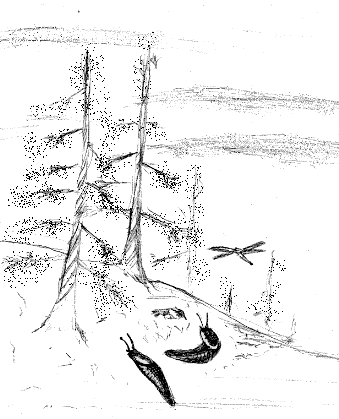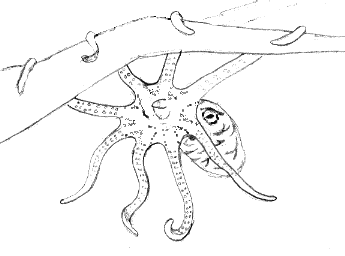
A pair of giant slugs graze peacefully near a stand of redwoods.
The gastropods are also represented by the snails, these were all much smaller than the slugs. The necessity of carrying a shell restricting their size.
Despite the vast numbers of arthropods that were seen, the phyla that made the greatest impression were the molluscs. They were simply the most striking of any of the animals we saw.
It was slugs, herds of them moving over the grasslands that I shall remember most vividly about this world. The largest ones reaching a couple of metres in length and weighing over 100 kilos. Slugs were everywhere, in the trees, on the ground, tunneling through it. There were gliding slugs that could flatten their bodies and glide between the trees. Perhaps the most interesting species was the sprinting slug. These were capable of considerable turn of speed, they would form a number of pseudopoda along the base of ther foot and would simply ripple them along their length. They could only achieve this feat over a short distance but that was all they needed because few predators could match it.
 |
A pair of giant slugs graze peacefully near a stand of redwoods. The gastropods are also represented by the snails, these were all much smaller than the slugs. The necessity of carrying a shell restricting their size. |
Cephalopods were also present, in the trees. Where several species of octopus were found. There they hunt slugs, insects and echinoderms among the branches. In the sketch I made is one of the first arboreal octopi encountered. Which regarded us quizzically, a possible sign of the intelligence of these creatures. |
 |